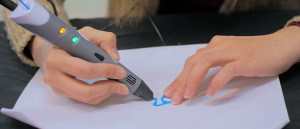“Mystery” protein helps with wound healing, while also waving cancer red flag

Cancer biomarker with surprising second job could inspire new chronic wound therapies.
Scientists from Arizona State University (AZ, USA) have discovered that a protein associated with epithelial cancer also appears to play an important role in wound healing. This unexpected finding is the result of studies in mouse models and human cells, and not only sheds some light on the multi-hyphenate protein’s involvement in cancer development, but pinpoints a promising new therapeutic target for tissue repair.
The protein, SerpinB3, is a widely adopted biomarker for epithelial cancer and, when dysregulated, has been linked to cancer-promoting activities, including apoptosis resistance, immune evasion, and metastasis. It has also been implicated in non-cancerous inflammatory disorders such as asthma, fatty liver disease, and pulmonary fibrosis. However, there is much we still don’t know about the protein, and its endogenous biological function remains undefined.
“For more than four decades, SerpinB3 has been recognized as a driver of cancer growth and metastasis – so much so that it became a clinical diagnostic. Yet after all this time, its normal role in the body remained a mystery,” first author of the recent research, Jordan Yaron of the Biodesign Center for Biomaterials Innovation and Translation (AZ, USA), explained.
Now, Yaron and co-authors have added another piece to the protein’s puzzle, by identifying SerpinB3 as a mediator of epithelial wound healing.
 A wound-healing bioink accelerates skin repair
A wound-healing bioink accelerates skin repair
Researchers have developed a hydrogel bioink that can be administered directly into cuts with a 3D-printing pen to accelerate the wound-healing process.
The team performed transcriptomic analysis, immunoblots, and immunohistochemistry on full-thickness mouse wound tissues, to reveal that serpin proteins, including the mouse ortholog Serpinb3a, were induced in the epidermis response to injury, especially when the wounds were covered with silk fibroin-gold nanorod dressings, which are known to accelerate wound healing.
Meanwhile, overexpression and scratch assay experiments were performed in human keratinocytes, demonstrating that SerpinB3 promotes epithelialization by inducing an epithelial–mesenchymal transition-like phenotype in keratinocytes.
In vivo experiments using recombinant Serpinb3a in mice revealed accelerated wound closure and collagen remodeling.
“When we looked at injured, healing skin, we found that cells moving into the wound bed were producing enormous amounts of this protein. It became clear that this is part of the machinery humans evolved to heal epithelial injuries, a process that cancer cells have learned to exploit to spread. This now opens the doors to understanding how this protein is involved in many more diseases,” Yaron concluded.
Although more research is needed to fully understand SerpinB3’s role in wound repair, the researchers hope it could one day be incorporated into a therapy for chronic, hard-to-heal wounds.